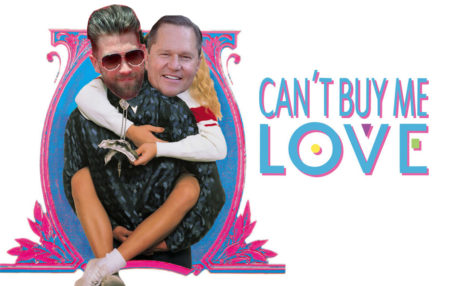Can’t Buy Me Love: Baseball Free Agency Begins
 The Feeding Frenzy Has Begun …
The Feeding Frenzy Has Begun …
The annual baseball meat market has begun to the Beatles’ tune: “Can’t Buy Me Love.”
Player prices already seem to be higher. The ask is in the stratosphere, based on the back of the baseball card. But will the money be spent on a fecund future?
Speculation abounds which players are going where and which teams will shell out big money for those players. Specifically, the two biggest names are Manny Machado and Bryce Harper. All eyes are cast on them. The rest of the supporting cast, listening to “Can’t Buy Me Love” with frowns on their faces.
Two New York Yankees who were free-agents, Brett Gardner and CC Sabathia, re-signed with the Yankees, accepting lesser 2019 contracts than they played on in 2018. So, they’re happily off the market.
For many other players, especially those expecting to receive huge paydays, the waiting game to see who is offered what and when, and which dominoes will fall first, has begun. But for those expecting the offer of a lifetime, this offseason may seem like an eternity.
“Can’t Buy Me Luh-uve, everybody tells me so . . .”
It’s a question of strategy, time and expectations.
Biggest Unmove of the Offseason So Far …
Scott Boras, Bryce Harper’s contractual guru, told the newspapers Bryce Harper rejected the first salvo of the Washington Nationals. A 10-year, $300 million contract offer. Some reporters thought they heard the Beatles “Can’t Buy Me Love” playing off in the distance.
So, at least one team, the only team Harper has ever worked for, has put a value on his services. The question is why that much? Has he done anything to deserve such love?
Nationals GM Mike Rizzo presumably makes these choices with ownership’s approval. And he must have at least thought he had to make the gesture, but whether he is glad or not Harper turned down the offer, he’s not saying. After all, even with Harper, the Nationals went nowhere. And this season they regressed, as did Harper. So, why the big offer?
Because it’s showtime. Free agency. The time for the big players to take the stage. And Rizzo has been one of the big management players the last few years, moving pieces all over the board in an effort to push his Nationals over the top. Few of his moves have worked. Though the acquisition of Trea Turner was solid.
Maybe Rizzo is happy the Nationals can move on with Juan Soto and Victor Robles replacing the theoretical Hall of Fame production they were supposed to have received from Harper. Maybe a less costly collection of hungry players is what the Nationals need. Unless Washington intends to rejoin the Bryce Harper fray at some later point. Who knows?
So, as teams begin to think about the ways they can restock the cupboards, the question is, where is the talent? Free agency. Trades. Perhaps an international signing from the Japanese or Korean baseball leagues. An experienced player looking to cross the Pacific.
There Are Only So Many Players …
Sure, teams look at each other’s rosters. But not every team knows what they’re doing. Not every team knows above-average from ordinary. Inefficiencies in talent evaluation abound. It’s an art, not a science. Beauty is always in the eye of the beholder. A cliché, but very true.
So, Harper and Boras must have some tricks hidden up their sleeves. Boras must expect his usual hocus-pocus-abracadabra incantations will magically yield a sexier offer for Harper. Like, presto! Who knows, maybe it’s 10 years at $400 million? Does that sound better? Would any mere mortal turn down that offer? Even one who believes in the magic of elixirs?
After all, $400 million buys more love than $300 million, right?
Remember Boras was the magician who counseled Mike Moustakas last year when he turned down the Kansas City Royals’ $17.4 million Qualifying Offer, only to watch Moustakas drink the potion and then, only three months later, sign a one-year contract that was $11 million less from the same Kansas City Royals. Now that’s diabolical. Neither the magician nor his client must have enjoyed the rancid tang of that diaphanous $11 million brew. So, Boras better have his magic cap on firmly this offseason.
Boras and the other agents will be facing teams desperate to prove their mettle and others simply hoping to improve, like the hapless New York Mets, whose new GM, Brodie Van Wagenen, aches to do something, anything, that makes it seem he’s pulled a rabbit out of his hat. He does not want to be caught on stage in the bright lights as his predecessor was—with nothing up his sleeve.
Farhan Zaidi, the number-two Dodgers baseball executive who was recently pilfered by the San Francisco Giants, may also be looking to make a statement. But the Giants’ talent base is aging, overpriced and, in many cases, unproven, so all he may be able to do is trade for a few young players. But that may be enough to start.
In New York, some see the dumb-and-dumber syndrome befalling the Mets again. Why? Because they apparently never asked the Dodgers for permission to speak to Farhan Zaidi (and, of course, passed over Chaim Bloom) before hiring Van Wagenen. What were they thinking?
The trick for the decision-makers is to avoid the ignominy of despair. Making the wrong move. Completing the wrong trade. Signing the wrong player. Spending too much.
The goal is trying to look competent to their fan base. Take smart steps to improve the team.
So, here we are. Free agency. Trades. No deadlines.
The Other Biggest Unmove of the Young Offseason So Far…
Chaim Bloom, the SVP for Baseball Operations alongside the GM, Erik Neander in Tampa Bay, has yet to receive an offer. Big surprise. He and Neander are behind all the shrewd baseball strategy in Tampa Bay.
Including yesterday’s steal that brought a 27-year-old, front-line catcher, Mike Zunino, in a market where catching is at a premium. Tampa Bay also received a young left-handed pitcher, Michael Plassmeyer, selected in the fourth round of the 2018 draft by Seattle. Seattle received fleet outfielder Mallex Smith and another young minor league outfielder. Hmm. How does Tampa Bay do it?
The question is why no other team appreciates Bloom’s wizardry. How many masterful exchanges must Bloom architect before someone notices? Or is it because Bloom represents contrary thinking. He was caught listening to “Can’t Buy Me Love” once too often.
Tampa Bay is not one of the organizations binging at the annual free agency trough. In fact, Bloom has proven he knows what he’s doing when scouring the minor leagues for hidden gems, and after finding them, Tampa Bay knows how to develop the talent and bring out the best in the player. His métier is not only to avoid forking over millions for players on the decline, but to cultivate young talent.
Witness Mallex Smith. One good year (a 3.4 WAR, a .773 OPS, and a wRC+ of 117) brings a catcher (a 1.4 WAR, a .669 OPS, and a wRC+ of 84) with an upside, when so many other teams are desperate for catching. Including, of course, the New York Mets.
So, there seems to be no problem how to find and reimagine quality baseball players in Tampa Bay.
In Flushing Meadows, NY? Big problems. Reports say the Mets want to re-sign Asdrubal Cabrera. Hey, it could be worse. They could be seeking to re-sign Jose Reyes, too. Talk about undisciplined thinking. What would Chaim Bloom do?
Fairly soon, fans should begin to see which teams are desperate enough to part with cash in the belief that money can buy them love. Or a championship.
The Beatles wrote “Can’t Buy Me Love” half a century ago. The song was about money. Someone should play it very loud at the Winter Meetings at the Mandalay Bay Resort and Casino in Las Vegas, come this December.
Then go looking for Chaim Bloom.

























